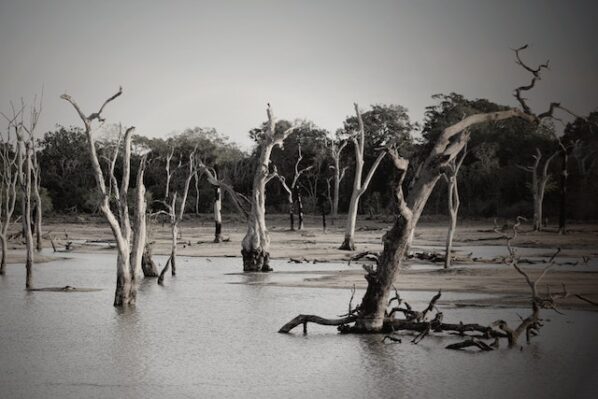Dealing with the aftermath of a flood can be extremely difficult and stressful. Your home or business has likely sustained major water damage and many health and safety risks must be considered. Prompt action is required to begin the recovery process and prevent further damage.
Assess the Damage
The priority after flood waters recede is evaluating the scope of the damage. This information will allow you to develop an effective plan for restoration and repairs. Examine walls, floors, doors, windows, and the foundation for indications of structural damage. Cracks, buckling, or shifts may signal a compromised foundation that requires professional engineering services. Sagging ceilings or roofing could mean hidden water saturation. It’s critical to identify electrical hazards and damage after a flood. Water exposure can cause shorts, shocks, and electrocution risks. Check for sparking outlets, overloaded circuits, faulty wiring, and corrosion. Assume all electrical systems are compromised until certified safe by an electrician.
Identify what areas were flooded, how high the water rose, and how long the space was submerged. Lingering moisture in walls, insulation, and carpets can lead to mold and bacteria growth pact for water stains or saturated materials. Inventory all damaged or destroyed furniture, appliances, and belongings. Carefully document the damage through photographs and video. Your insurance adjuster will require evidence of losses and property damage. Ensure to capture images of water lines, discarded items, discoloration, and more.
Ensure Safety
Before beginning any post-flood cleanup, safety must be the top concern. Remaining floodwaters, structural instability, contaminated materials, and electricity create hazardous scenarios. Take the following precautions. Only occupy or work in a home with standing water if electricity and gas are turned off at the main breaker and valve. Electrocution is a real danger. Verify utilities are deactivated before inspecting the damage.
Have professionals restore gas and electric service once the building is confirmed dry. Floodwaters may contain sharp debris, sewage, chemicals, and other contaminants. Wear boots, gloves, goggles, and a respirator. Assume floodwater contains hazardous substances even if the source is “clean” rainwater. Look for signs of fire ant swarms or exposed asbestos in older homes. Assume all structural materials, surfaces, and contents are contaminated. Rodents and other pests may be present.
Dry Out Affected Areas
Once safety issues are addressed, take immediate steps to facilitate the drying of flooded areas to avoid further moisture issues. Extract pooled water from submerged structures and cavities. Use heavy-duty wet/dry shop vacuums and sump pumps to drain basements, crawl spaces, and other flooded areas. Moisture left lingering will exacerbate damage and hinder repairs. Position fans strategically to maximize airflow. This will help remove musty odors and discourage mold growth.
Portable and commercial dehumidifiers are essential for drawing residual moisture from soaked materials. Run continuously until building materials dry. Monitor with a hygrometer and aim to maintain indoor relative humidity under 40%. If you live in the Denver region, consider professionals who have experience in water damage restoration in Denver or wherever you may live who have high-volume dehumidification equipment.
Clean Up and Sanitize
Removing contaminated debris and thorough sanitizing helps re-establish a safe living environment after a flood. Follow these guidelines for effective flood cleanup. Flood debris comprises contaminated and water-logged materials like drywall, insulation, carpets, and personal belongings. Sort what can be recovered from what must be discarded. Photograph and inventory all removed items for insurance purposes. Follow local regulations for flood debris disposal. Sanitizing kills bacteria and mold left behind. Mix bleach solution or use EPA-approved disinfectants on all flooded surfaces and scrub thoroughly.
Pay special attention to areas where flood waters pooled extensively. Rinse with clean water afterward. For the deepest cleaning, use commercial solutions specifically for post-disaster restoration. Seek supplies recommended by water damage restoration Denver professionals. Clean from higher surfaces, and begin with HEPA vacuuming before wet cleaning. If signs of mold appear, take immediate remedial action. Small areas can be scrubbed with detergent and borax solution. For larger mold colonies, consider hiring a mold remediation contractor. Removing mold promptly helps prevent serious indoor air quality issues or property damage.
Prevent Future Flood Damage
To help safeguard property from experiencing flood damage again, consider implementing preventative measures tailored to your location’s unique risks. Here are some options to discuss with local professionals. A properly rated sump pump system with backup power can rapidly eject groundwater intrusion from basements and crawl spaces, preventing flooding. A professional can size and position the system appropriately. Relocating essential utilities higher in the structure helps avoid contact with floodwater. Prioritize relocation for HVAC systems, water heaters, electrical panels, and outlets.
Cracks create entry points for water penetration. Inspect the foundation and exterior walls for signs of moisture intrusion. Use hydraulic cement, epoxy filler, and waterproof membranes to seal openings. Divert rain runoff away from the structure as well. Adding coverage through FEMA’s National Flood Insurance Program can offset costs from a future flood. Review policy options and speak with an agent about appropriate coverage limits based on your flood risk.
Conclusion
Recovering fully from a destructive flood requires systematically addressing many concerns, including safety and property preservation. While it’s an extremely difficult experience, taking the proper five steps immediately after flood waters will minimize further issues and set your restoration process on the right track.
Pay special attention to drying out the structure thoroughly to avoid moisture problems. Feel free to call in qualified flood damage and mold remediation professionals when in doubt. With persistence and care, you can overcome flood damage’s physical and emotional impacts.
